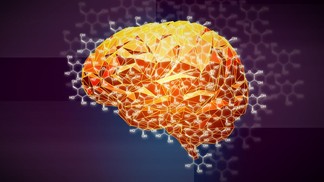Oct 14 2015
Using a geologist’s imaging tool, researchers have made unprecedented high-resolution images of how carbon atoms from glucose are integrated into brain cells, providing new insight and opening new doors into the fate of glucose in the brain.
 ©2015 EPFL – Jamani Caillet
©2015 EPFL – Jamani Caillet
Glucose – a form of sugar – fuels the brain. But how it goes from the blood to the brain cells and where it ultimately winds up are not yet well understood. Harnessing the power of a special kind of microscope that was used for the first time to image metabolism of the brain, researchers from EPFL, the Nestlé Health Institute, and the University of Lausanne have tracked the fate of individual carbon atoms deep into the brain’s neurons and astrocytes. Their work, published in the Journal of Chemical Neuroanatomy, paves the way for a better understanding of how healthy and diseased brains metabolize glucose, which in the future could contribute to the development of new methods to diagnose and treat neurological diseases.
“Half of the glucose we have in our blood is consumed by our brain; this we know. But what we don’t know, at least not in detail, is what this glucose is used for and where it winds up,” says Arnaud Comment, one of the study’s lead investigators. The reason for this is that existing experimental methods have been unable to conclusively resolve this question. But thanks to a microscope originally developed to study the isotopic composition of rock samples called a NanoSIMS, it looks like researchers may finally have a tool to help them find an answer.
“The NanoSIMS gives us a view of what goes on at the sub-cellular level that nobody has had access to before. It is an example of a geochemical technology that is being pushed into the realm of life sciences through a cross-campus collaboration,” says Meibom, whose EPFL research lab runs the NanoSIMS, the only one of its kind in Switzerland. Combining transmission electron microscopy (TEM) with secondary ion mass spectroscopy, the device lets researchers locate trace amounts of labeled atoms down to a resolution of only a few hundred nanometers.
“In this study, we imaged the fate of glucose, the brain’s main energy source, at the cellular level,” says Meibom, who is also the study’s second lead investigator. “Our question was: where is the brain putting its money? We do not have an answer quite yet, but we do have data showing that after a few hours, neurons have accumulated more carbon from the glucose in their structure than astrocytes. We can find high concentrations of carbon atoms from the glucose in the neurons’ nuclei and other cellular compartments – a sign of increased metabolic activity.”
While their findings neither refute nor validate current theory holding that astrocytes extract glucose from the blood stream and deliver some of it to neurons, they provide an unprecedented and very accurate snapshot into exactly where the carbon from the glucose is going in the brain.
But, the researchers hope, their method could help determine the early metabolic signature of certain types of disease, which could be a boon to research and the development of treatment strategies. Catching the onset of Alzheimer’s, for example, is complicated by the fact that, by the time the structure of the brain’s cells is visibly affected, it is already too late. Instead, more subtle cues would have to be picked up, such as changes to the cells’ metabolism – the chemical reactions that sustain them, providing them with energy and matter. Changes in glucose metabolism of specific parts of the brain could, for example, provide an early warning for the onset of Alzheimer’s.
Today, the NanoSIMS lets researchers study the incorporation of labeled atoms into solid structures, but Meibom wants to take it one step further. “We are working on extending the capabilities of the NanoSIMS to be able to work with frozen samples, giving us a means of visualizing soluble compounds as well. Using such a CryoNanoSIMS, we will not only be able to see where specific compounds have been integrated into the proteins that make up the cell, but we will also be able to trace their dissolved metabolite precursors,” he says.
Reference: Yuhei Takado et al. Imaging the time-integrated cerebral metabolic activity with subcellular resolution through nanometer-scale detection of biosynthetic products deriving from 13C-glucose, Journal of Chemical Neuroanatomy, Available online 25 September 2015,
This research was supported by the Synapsis Foundation.